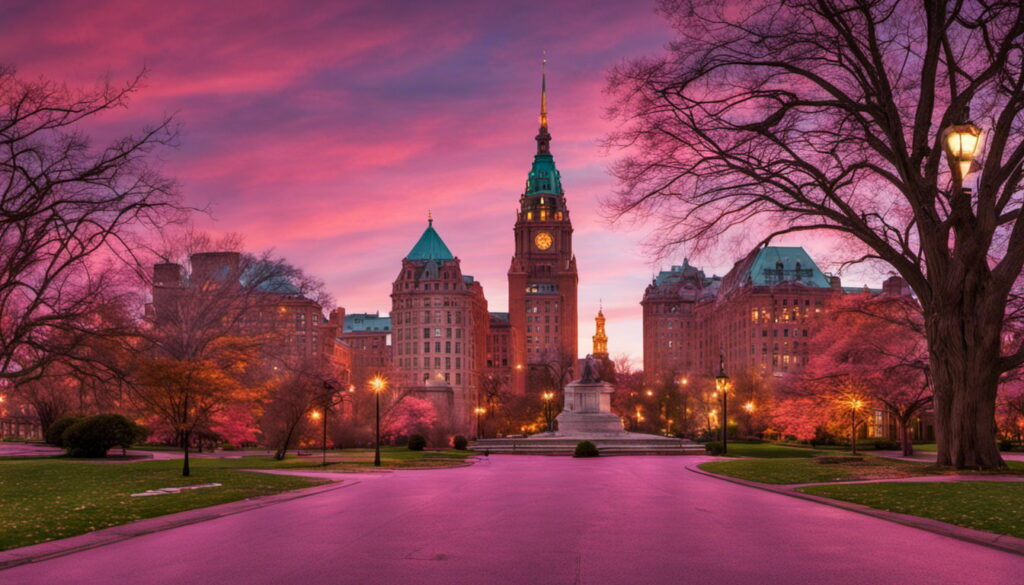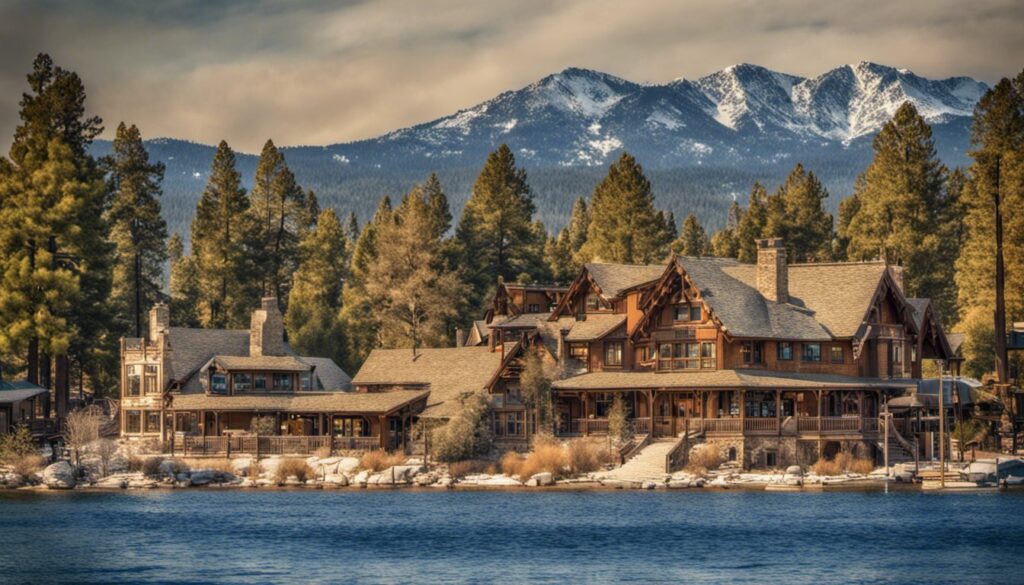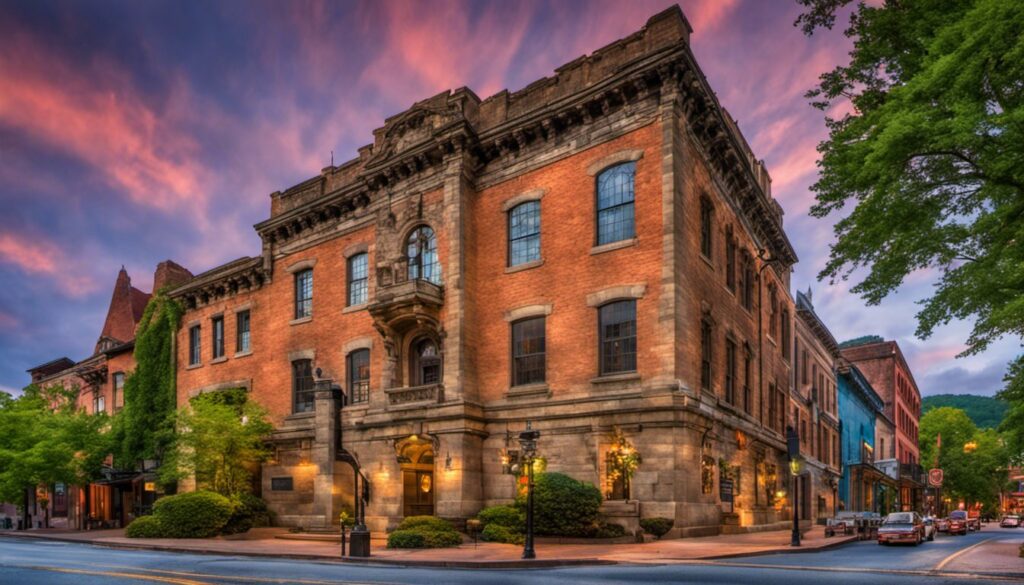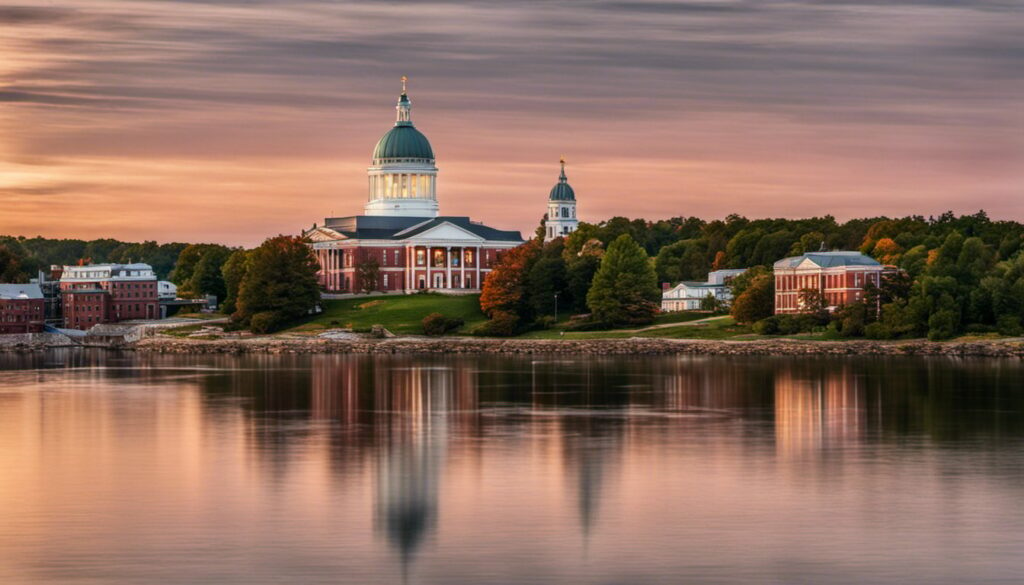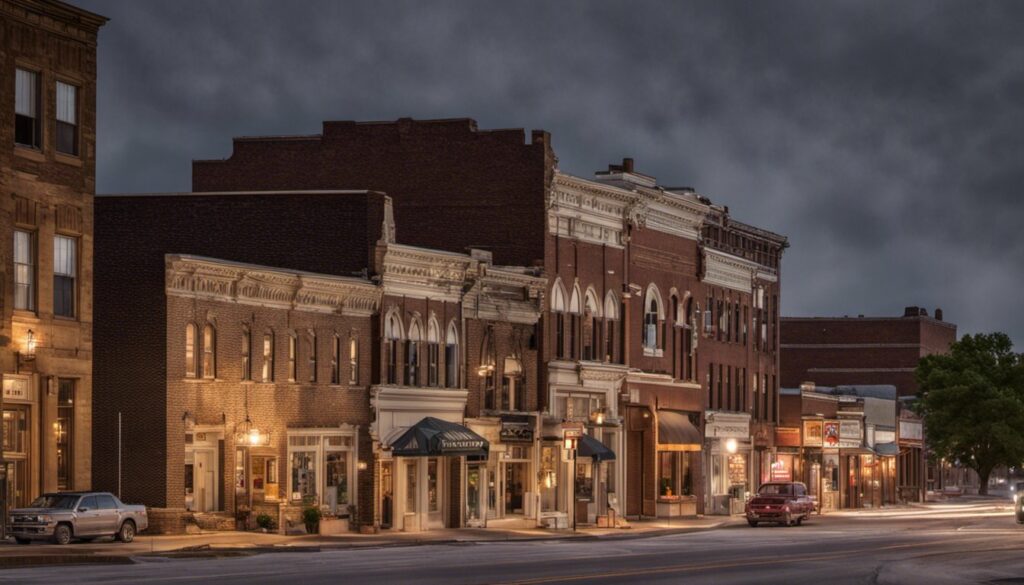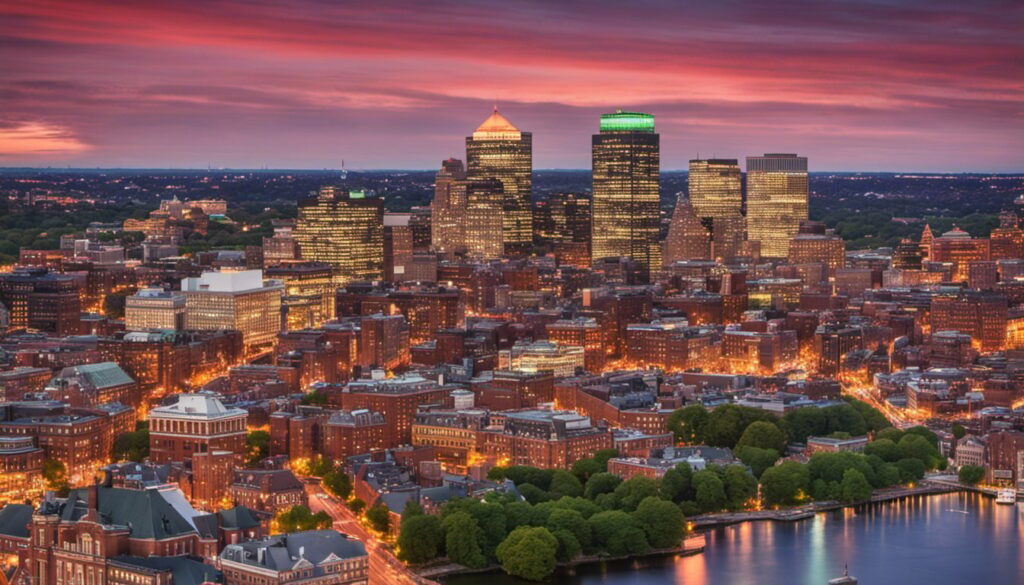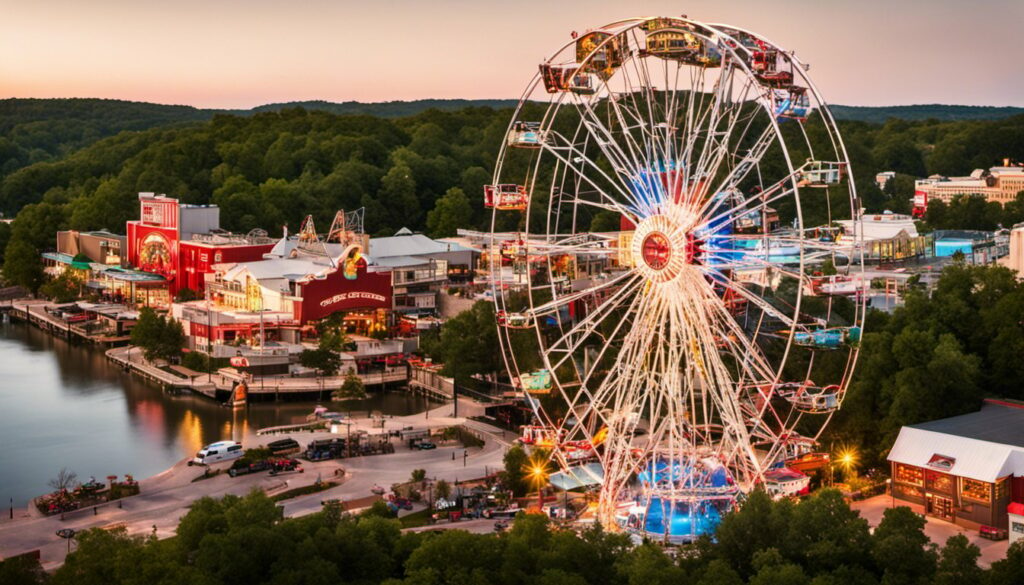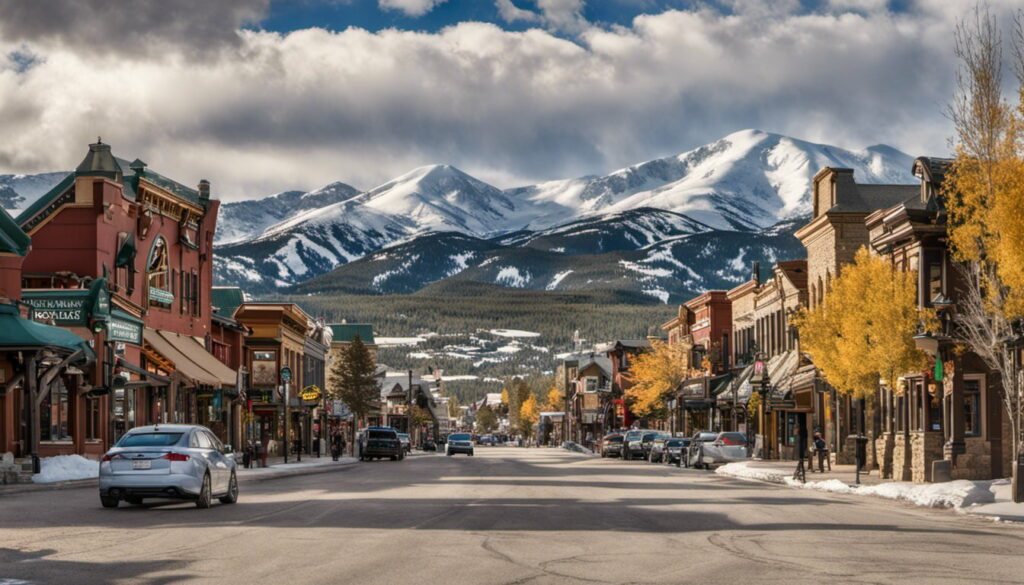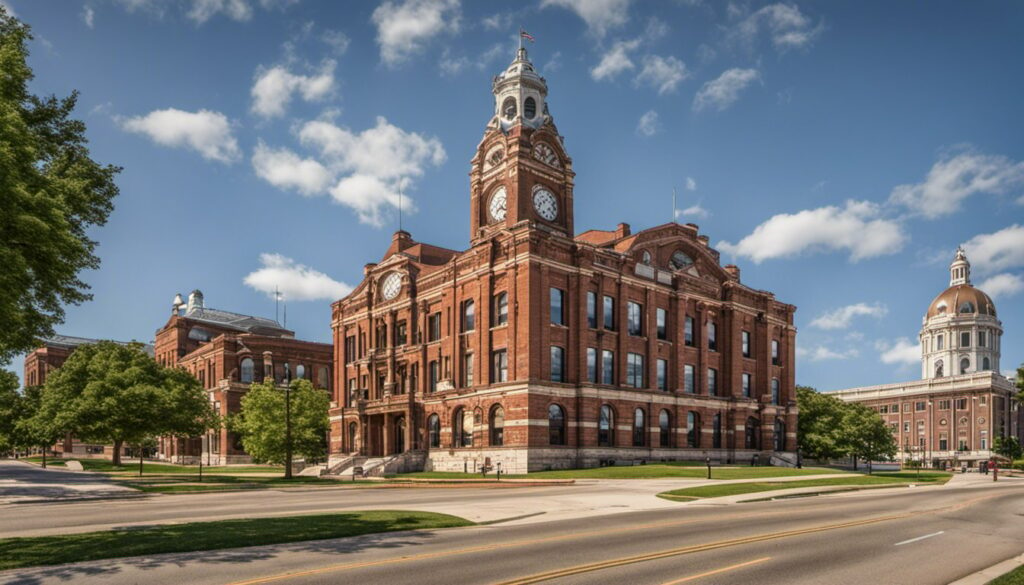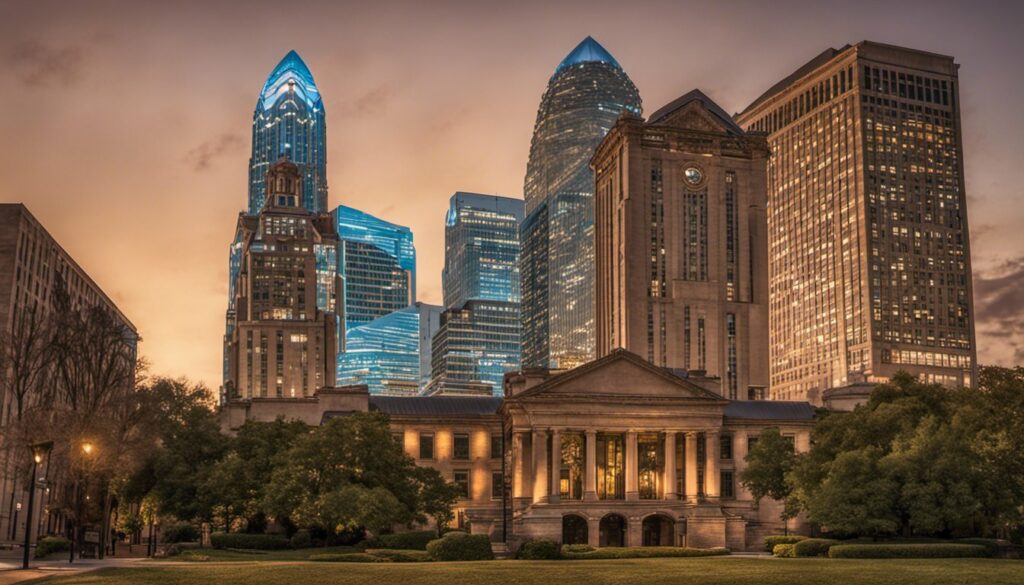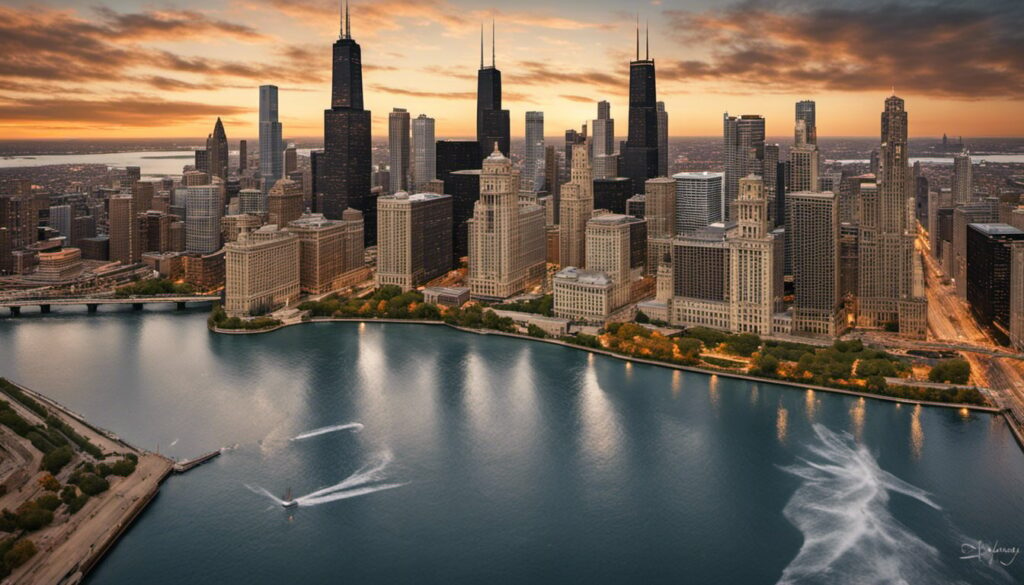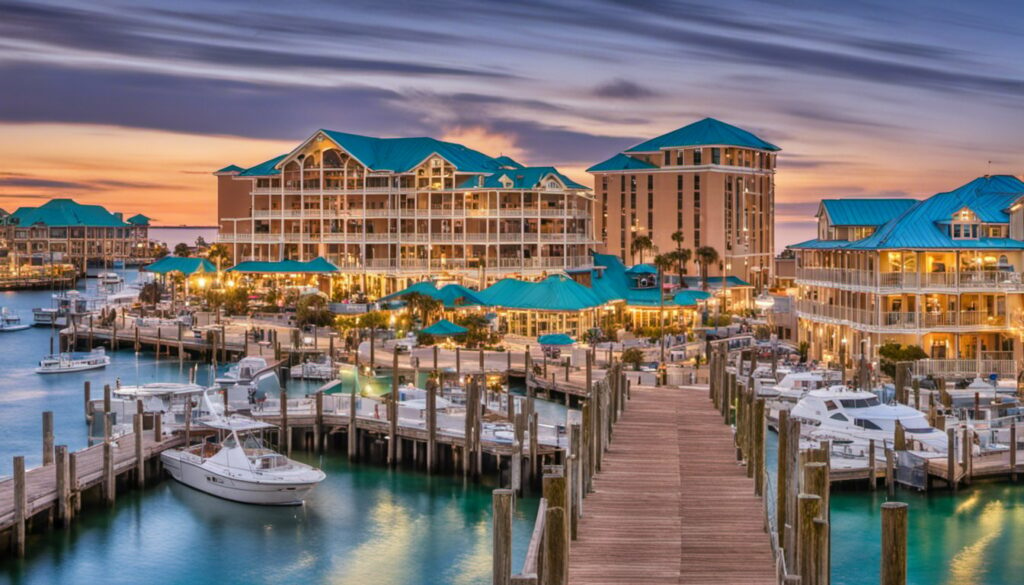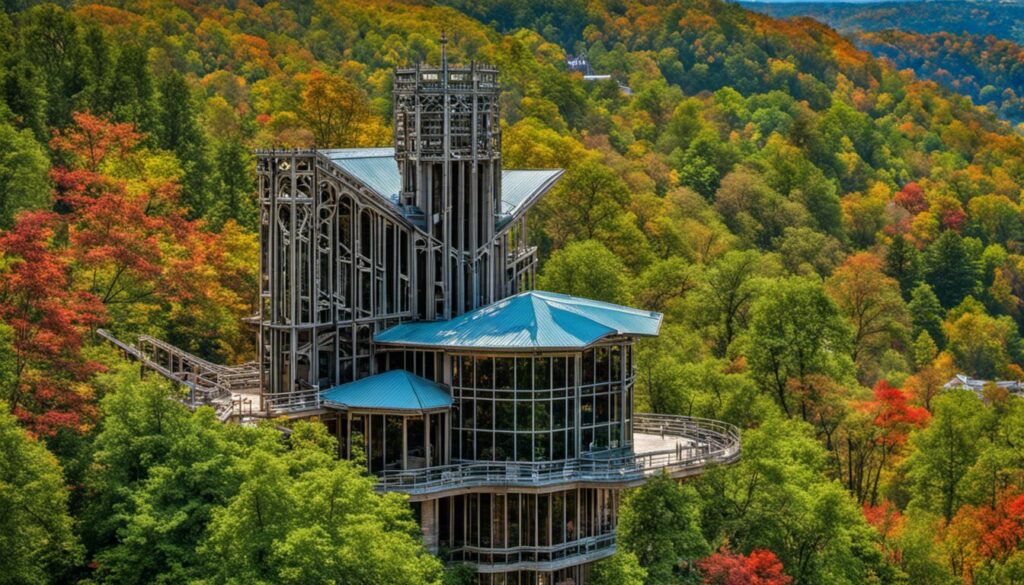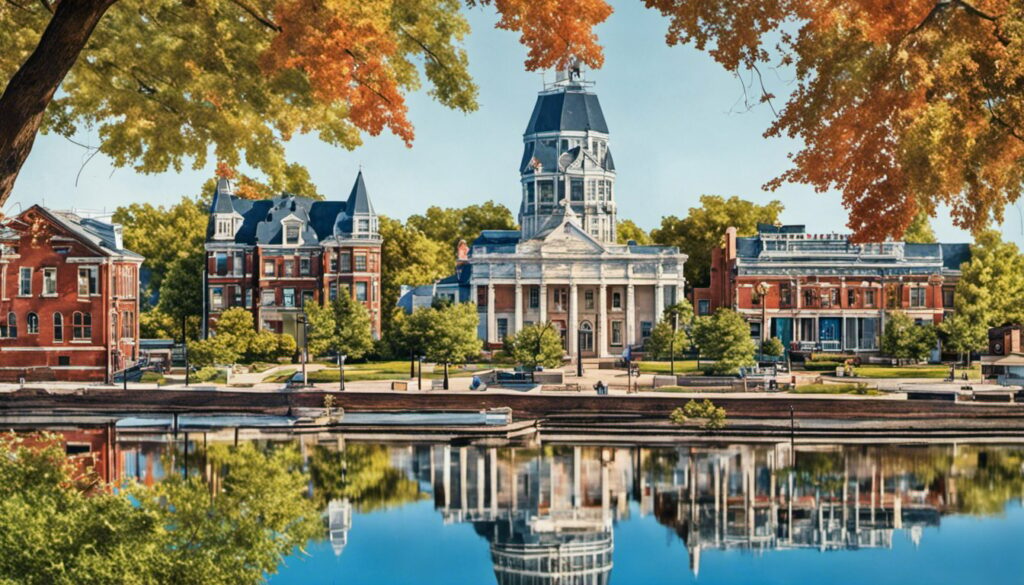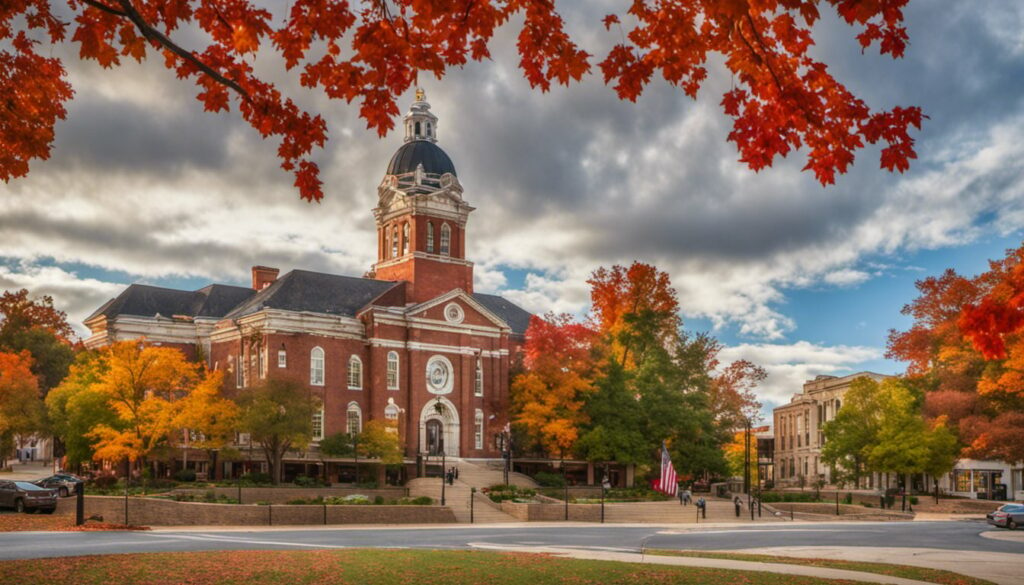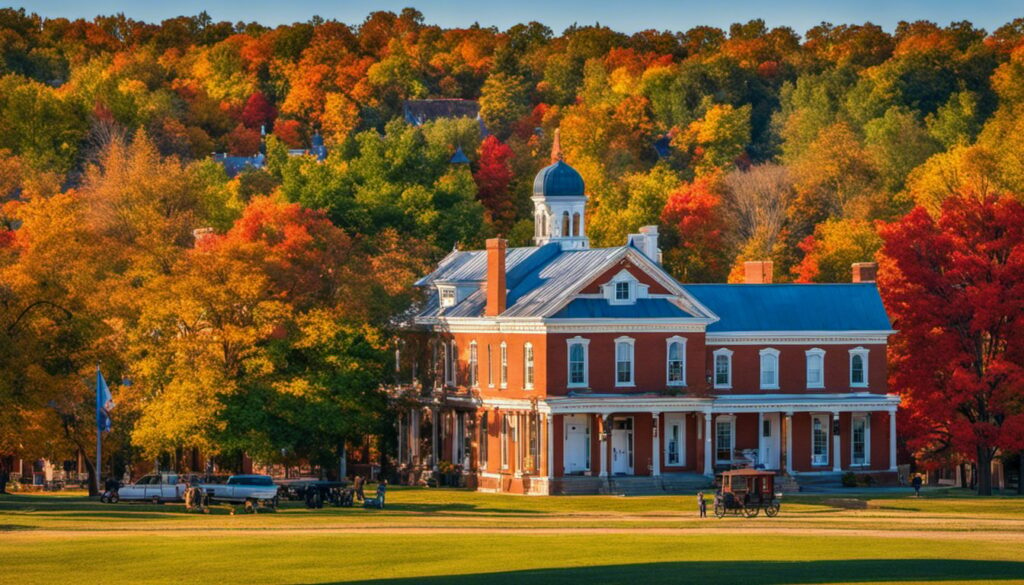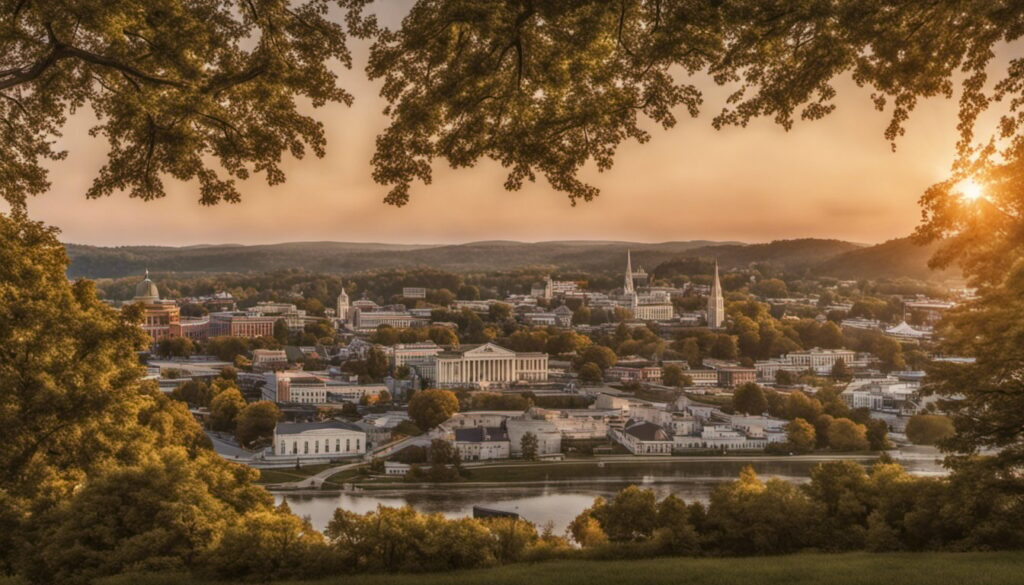Table Of Content
- Discover the Best Historical Sites and Famous Landmarks in Hartford, Connecticut!
- Discovering Hartford: A Historical Journey
- Famous Landmarks
- Connecticut State Capitol
- Mark Twain House and Museum
- Old State House
- Cathedral of St. Joseph
- Bushnell Park and the Soldiers and Sailors Memorial Arch
- Wadsworth Atheneum
- The Ancient Burying Ground
- Hartford’s Historic Districts
- Hartford’s Contributions to American History
- Frequently Asked Questions
Discover the Best Historical Sites and Famous Landmarks in Hartford, Connecticut!

Discovering Hartford: A Historical Journey
Embark on a journey through time and discover the rich history of Hartford, Connecticut. From its early beginnings to the Industrial Age, Hartford has played an important role in shaping the history of the United States.
Early Beginnings


Hartford was founded in 1635 by Thomas Hooker, a Puritan minister who led a group of settlers from the Massachusetts Bay Colony. They established a settlement on the banks of the Connecticut River, which they named Newtown. In 1637, the settlement was renamed Hartford, after Hertfordshire in England, the birthplace of Samuel Stone, one of the settlers.
In the early years, Hartford was primarily an agricultural community, with farms and small businesses. However, it quickly became a center of trade and commerce, thanks to its location on the Connecticut River. The town grew rapidly, and by the mid-1700s, it was one of the largest and wealthiest towns in the colonies.
Revolutionary Era


During the Revolutionary War, Hartford played a significant role in the fight for independence. In 1775, the Connecticut General Assembly met in Hartford and voted to raise troops to fight against the British. The following year, the assembly adopted the Declaration of Independence, making Connecticut one of the first states to do so.
Hartford was also the site of the Hartford Convention in 1814, where representatives from New England states met to discuss their grievances with the federal government. Although the convention was not successful in achieving its goals, it highlighted the growing tension between the northern and southern states.
Industrial Age


In the 19th century, Hartford became a center of industry, with factories producing everything from firearms to typewriters. One of the most famous companies to emerge from Hartford was Colt’s Patent Fire-Arms Manufacturing Company, which revolutionized the firearms industry with its innovative designs.
Other notable companies that were founded in Hartford include Aetna Insurance, the Travelers Insurance Company, and Pratt & Whitney, a manufacturer of aircraft engines. These companies helped to make Hartford one of the wealthiest cities in the United States, and their legacy can still be seen in the city today.
In conclusion, Hartford has a rich and fascinating history that is just waiting to be explored. Whether you’re interested in the early beginnings of the town, the Revolutionary War era, or the Industrial Age, there is something for everyone in Hartford. So why not take a trip back in time and discover the history of this amazing city for yourself?
Famous Landmarks

Hartford, Connecticut is home to several famous landmarks that attract tourists and locals alike. Here are some of the must-see landmarks in Hartford:
Connecticut State Capitol


The Connecticut State Capitol is one of the most iconic landmarks in Hartford. Completed in 1878, the building houses the offices of the Governor, Lieutenant Governor, Secretary of State, and other state officials. The Capitol building is known for its stunning architecture, including its gold-leaf dome and beautiful marble floors. Visitors can take a guided tour of the Capitol building and learn about the state’s history and government.
Mark Twain House and Museum


The Mark Twain House and Museum is a must-visit landmark for literature enthusiasts. This historic house was the home of the famous American author Mark Twain from 1874 to 1891. The house is now a museum that showcases Twain’s life and works. Visitors can take a guided tour of the house, which features original furnishings and artifacts from Twain’s life.
Wadsworth Atheneum Museum of Art


The Wadsworth Atheneum Museum of Art is one of the oldest public art museums in the United States. The museum’s collection includes over 50,000 works of art, ranging from ancient Egyptian artifacts to contemporary art. Some of the most famous pieces in the museum’s collection include works by Salvador Dali, Georgia O’Keeffe, and Vincent van Gogh. Visitors can take a guided tour of the museum and learn about the history of art.
Bushnell Park


Bushnell Park is the oldest publicly funded park in the United States. The park covers over 50 acres and features several famous landmarks, including the Soldiers and Sailors Memorial Arch and the Corning Fountain. Visitors can take a stroll through the park and enjoy its beautiful gardens, fountains, and sculptures.
Hartford City Hall

Hartford City Hall is another famous landmark in the city. The building was completed in 1915 and is known for its stunning Beaux-Arts architecture. Visitors can take a guided tour of the building and learn about the city’s history and government.
Whether you are a history buff, art lover, or just looking for a beautiful place to visit, Hartford’s famous landmarks are sure to impress.
Connecticut State Capitol


If you’re interested in history and architecture, you won’t want to miss the Connecticut State Capitol. This beautiful building, located in the heart of Hartford, is a must-see for anyone interested in the state’s political history.
The Connecticut State Capitol was opened in 1878 and is the third capitol building for the State of Connecticut since the American Revolution. The building is a stunning example of Victorian Gothic architecture, complete with a gold-domed tower that rises 257 feet above the city.
Inside the building, you’ll find the executive offices and legislative chambers of the state, as well as historical memorabilia including statues of Nathan Hale, “The Genius of Connecticut,” and Governor William Buckingham. Take a guided tour to learn more about the building’s history and architecture, or explore on your own and discover the many interesting features and details of this beautiful landmark.
The Connecticut State Capitol is also located in the picturesque setting of Bushnell Park, which is home to many other interesting historical landmarks and attractions. Take a stroll around the park and explore the many monuments, fountains, and gardens that make this one of Hartford’s most popular destinations.
Whether you’re a history buff, an architecture enthusiast, or just looking for a fun and interesting way to spend an afternoon, the Connecticut State Capitol is a must-see attraction that you won’t want to miss. So why not plan a visit today and discover the beauty and history of this iconic landmark for yourself?
Mark Twain House and Museum


If you’re a fan of literature and history, then a visit to the Mark Twain House and Museum is a must when you’re in Hartford, Connecticut. This beautiful Victorian mansion was the home of Samuel Langhorne Clemens, also known as Mark Twain, from 1874 to 1891. It’s a National Historic Landmark and a great representation of the American High Gothic style.
The Mark Twain House and Museum offers a unique opportunity to step back in time and experience the life of one of America’s greatest authors. You can take a guided tour of the 25-room mansion and see where Mark Twain wrote some of his most famous works, including “The Adventures of Tom Sawyer” and “Adventures of Huckleberry Finn”.
The interior of the house is just as impressive as the exterior, with beautiful design elements by Louis Comfort Tiffany. You’ll see original furnishings, artwork, and personal belongings of the Clemens family. The museum also has a large collection of Mark Twain’s manuscripts, letters, and other artifacts on display.
During your visit, you can also participate in various activities and educational programs that illuminate Twain’s literary legacy and provide information about his life and times. There are also other historic sites nearby, such as the Harriet Beecher Stowe Center, which is located directly across the lawn from the Mark Twain House, and the Old State House, a National Historic Landmark located in downtown Hartford.
Overall, the Mark Twain House and Museum is a unique and exciting destination for anyone interested in literature, history, and architecture. You’ll leave feeling inspired and with a greater appreciation for one of America’s greatest authors.
Old State House


If you’re interested in the history of Connecticut, you can’t miss the Old State House. Located in the heart of Hartford, this building served as a home to all three branches of state government from 1796 to 1878. It is one of the most significant historical landmarks in the state.
The Old State House is a beautiful building that has been restored to its original grandeur. There are several exhibits and displays that showcase the history of the building, including the Museum of Natural and Other Curiosities on the third floor. This museum features a recreation of Joseph Steward’s original 1798 collection of natural history displays and curiosities.
The Old State House has a haunted reputation, and many people believe that it is haunted by the ghosts of past governors and legislators. Whether or not you believe in ghosts, the Old State House is a fascinating place to visit. You can take a guided tour of the building and learn about the history of Connecticut and the role that the Old State House played in shaping the state’s government.
One of the most significant events that took place at the Old State House was the Amistad trial. In 1839, a group of African slaves who had been captured and brought to the United States on a Spanish slave ship revolted and took control of the ship. The ship was eventually captured off the coast of Long Island, and the slaves were brought to Connecticut, where they were put on trial for murder and piracy. The trial took place at the Old State House, and it was a landmark case that helped to shape the debate over slavery in the United States.
If you’re interested in Connecticut’s history, the Old State House is a must-visit destination. It’s a beautiful building that is full of interesting exhibits and displays, and it’s a great place to learn about the history of Connecticut and the role that the Old State House played in shaping the state’s government.
Cathedral of St. Joseph


If you’re a fan of architecture, the Cathedral of St. Joseph is a must-visit site in Hartford, Connecticut. This stunning cathedral is the mother church and seat of the Archdiocese of Hartford. Dedicated on May 15, 1962, it stands on the site of the old cathedral which had been destroyed in a fire. You can find it on Farmington Avenue just outside downtown Hartford.
The Cathedral of St. Joseph is a beautiful example of modern architecture. Its design is inspired by the great cathedrals of Europe, and it features a unique blend of traditional and contemporary elements. The cathedral is a repository for some of the most outstanding examples of contemporary ecclesiastical art – in stained glass, mosaics, and sculpture, in both metal and stone.
The beginnings of the Cathedral of St. Joseph coincide with the division of the Diocese of Hartford in 1872, when Providence, Rhode Island, became a separate diocese. Pope Pius VIII established the Diocese of Hartford in 1843 and named Rev. William Tyler, the Vicar General of Boston, as its first bishop. Since then, the cathedral has undergone several renovations and expansions to maintain its beauty and grandeur.
Overall, the Cathedral of St. Joseph is a testament to the rich history and culture of Hartford, Connecticut. Whether you’re a history buff, an architecture enthusiast, or simply looking for a beautiful place to visit, this cathedral is a must-see destination.
Bushnell Park and the Soldiers and Sailors Memorial Arch


You can’t talk about historical sites in Hartford, Connecticut without mentioning Bushnell Park. This 50-acre park is the oldest publicly funded park in the country and has been a beloved gathering place for Hartford residents for over 150 years. The park is home to many notable landmarks, including the Soldiers and Sailors Memorial Arch.
The Soldiers and Sailors Memorial Arch in Bushnell Park is a must-see for anyone interested in American history. This stunning arch was built in 1886 to honor the 4,000 Hartford citizens who served in the American Civil War, including 400 who died for the Union cause. It is notable as the first permanent triumphal arch to be built in America.
The arch is made of brownstone and stands 92 feet tall. It is adorned with intricate carvings and features a life-sized terra cotta frieze that depicts scenes of war on the north side and scenes of peace on the south. The arch is a beautiful and moving tribute to the sacrifices of those who fought and died for our country.
If you’re interested in learning more about the Soldiers and Sailors Memorial Arch, you’re in luck! The Bushnell Park Conservancy offers free tours of the arch from May to October, weather permitting. The tours are led by volunteer Arch Guides and last approximately 30 minutes. No reservations are needed unless you have a group of 6 or more.
In conclusion, Bushnell Park and the Soldiers and Sailors Memorial Arch are two of the most important historical sites in Hartford, Connecticut. Whether you’re a history buff or just looking for a beautiful place to spend an afternoon, you won’t be disappointed by a visit to this iconic park and landmark.
Wadsworth Atheneum


You can’t talk about historical sites and famous landmarks in Hartford, Connecticut without mentioning the Wadsworth Atheneum. This museum of art is the oldest continuously operating public art museum in the United States. It was founded in 1842 by Daniel Wadsworth, a significant patron of American arts, and opened two years later.
The museum’s collections contain nearly 50,000 works of art that span 5,000 years. The collections feature drawings, paintings, sculptures, and decorative arts. You will find works by famous artists such as Salvador Dalí, Frederic Edwin Church, and Georgia O’Keeffe. The museum also has an extensive collection of Hudson River School paintings.
The Wadsworth Atheneum has undergone several renovations and expansions over the years. Its oldest building, known as the “castle,” was designed by Alexander Jackson Davis and Ithiel Town and began construction in 1842. The museum has since expanded to include several other buildings, including the Avery Memorial building, which was designed by renowned architect Louis Kahn.
The museum is also known for its special exhibitions and events. You can attend lectures, workshops, and film screenings. The museum also offers guided tours for visitors of all ages. You can explore the museum’s collections on your own or join a docent-led tour to learn more about the art and history of the Wadsworth Atheneum.
Whether you’re an art lover or just interested in history, the Wadsworth Atheneum is a must-visit attraction in Hartford, Connecticut. With its extensive collections, beautiful architecture, and engaging exhibitions, the museum is sure to leave a lasting impression on you.
The Ancient Burying Ground


You step back in time as you visit The Ancient Burying Ground, the oldest historic site in Hartford, Connecticut. Located adjacent to Center Church, the cemetery was founded by Reverend Thomas Hooker and built in 1636. It is believed that an estimated 5-6,000 people from all classes and ethnic backgrounds were laid to rest here from 1640 to the early 1800s.
As the city’s first cemetery, all who died in Hartford, regardless of age, gender, race, ethnic background, economic status, or religious faith, were interred here. The Ancient Burying Ground is a testament to Hartford’s rich history and the people who played a role in shaping it.
What You’ll See at The Ancient Burying Ground:
- Monuments and Markers: The cemetery is home to a variety of monuments and markers, including those of notable figures such as Governor Thomas Welles, who served as Connecticut’s governor from 1655 to 1658 and 1659 to 1660.
- Carved In Stone: Many of the headstones are intricately carved with symbols, including skulls, angels, and crosses, which reflect the beliefs and customs of the time.
- A Photographic Inventory: The cemetery has a photographic inventory of all the headstones, which is available online for those who want to learn more about the individuals buried here.
The Ancient Burying Ground is a must-visit destination for anyone interested in history, genealogy, or just looking for a peaceful place to reflect.
Hartford’s Historic Districts

Hartford, Connecticut is home to many historic districts that have been preserved over the years. These districts are a testament to the city’s rich history and provide visitors with a glimpse into the past. Here are some of the most notable historic districts in Hartford.
Frog Hollow


Frog Hollow is one of the oldest neighborhoods in Hartford and is known for its historic architecture. The district is home to many Victorian-style homes, which were built in the late 19th century. Frog Hollow is also home to the Mark Twain House and Museum, which is a popular tourist attraction. The museum is the former home of the famous author Mark Twain and is a National Historic Landmark.
Asylum Hill


Asylum Hill is another historic district in Hartford that is known for its architecture. The district is home to many grand homes, which were built in the late 19th and early 20th centuries. Asylum Hill is also home to the Connecticut State Capitol, which is a National Historic Landmark. The capitol building is an impressive example of Gothic Revival architecture and is open for tours.
West End


The West End is one of the most diverse neighborhoods in Hartford and is known for its historic homes and tree-lined streets. The district is home to many large homes, which were built in the late 19th and early 20th centuries. The West End is also home to Elizabeth Park, which is a popular destination for locals and tourists alike. The park is home to many gardens and is known for its beautiful rose garden.
Overall, Hartford’s historic districts are a must-see for anyone interested in history and architecture. These districts provide visitors with a glimpse into the past and are a testament to the city’s rich history.
Hartford’s Contributions to American History
Hartford, Connecticut has a rich history that has contributed to the development of America. Here are some of the most significant contributions:
The Fundamental Orders of Connecticut


Hartford was the site of the adoption of the Fundamental Orders of Connecticut in 1639. This was the first written constitution in the world that established a government based on the consent of the governed. It served as a model for the United States Constitution and is considered one of the most significant documents in American history.
The Hartford Convention


In 1814, during the War of 1812, the Hartford Convention was held in Hartford. This meeting of New England Federalists proposed several constitutional amendments to limit the power of the federal government and protect the interests of the New England states. Although the Convention did not result in any actual changes to the Constitution, it was significant in that it highlighted the growing sectional tensions that would eventually lead to the Civil War.
The Colt Armory


The Colt Armory, located in Hartford, was one of the largest firearms factories in the world during the 19th century. It produced some of the most innovative and influential firearms of the time, including the Colt revolver and the Gatling gun. These weapons played a significant role in American history, from the expansion of the western frontier to the Civil War.
The Insurance Industry


Hartford is often referred to as the “Insurance Capital of the World” due to the large number of insurance companies headquartered there. The industry has played a significant role in American history, from helping to finance the construction of railroads and other infrastructure to providing financial security for families and businesses.
Mark Twain


One of America’s most celebrated authors, Mark Twain, lived in Hartford from 1874 to 1891. During this time, he wrote some of his most famous works, including “The Adventures of Tom Sawyer” and “Adventures of Huckleberry Finn.” Twain’s legacy has had a significant impact on American literature and culture.
Hartford’s contributions to American history are varied and significant. From the adoption of the first written constitution to the development of innovative firearms and the growth of the insurance industry, Hartford has played a crucial role in shaping America’s past and present.
Frequently Asked Questions
What historical sites can I visit in Hartford, Connecticut?
Hartford, Connecticut is home to numerous historical sites that you can visit. Some of the most popular ones include the Mark Twain House & Museum, the Harriet Beecher Stowe Center, the Ancient Burying Ground, and the Butler-McCook House & Garden. Each of these sites offers a unique glimpse into the history and culture of Hartford.
What are some famous landmarks in Hartford, Connecticut?
Hartford, Connecticut is home to several famous landmarks that you don’t want to miss. Some of the most notable ones include the Connecticut State Capitol, the Soldiers and Sailors Memorial Arch, and the Travelers Tower. These landmarks are not only important pieces of Hartford’s history, but they also offer breathtaking views of the city.
What is the significance of the Harriet Beecher Stowe Center in Hartford?
The Harriet Beecher Stowe Center is a historical site that is dedicated to the life and legacy of Harriet Beecher Stowe, the author of “Uncle Tom’s Cabin.” This site is significant because it offers visitors a chance to learn about the impact that Stowe’s work had on the abolitionist movement and the fight against slavery.
How can I learn more about the history of Dutch Point in Hartford, CT?
If you’re interested in learning more about the history of Dutch Point in Hartford, CT, you can visit the Dutch Point Colony Museum. This museum is dedicated to preserving the history of Dutch Point and the people who lived there. You can also check out the Hartford History Center at the Hartford Public Library for more information.
What is the Connecticut State Capitol and why is it important?
The Connecticut State Capitol is the seat of government for the state of Connecticut. This building is not only important because it houses the state legislature and the offices of the governor and lieutenant governor, but it is also a beautiful example of Victorian Gothic architecture.
Are there any Indian burial grounds in Connecticut that are open to the public?
There are several Indian burial grounds in Connecticut that are open to the public, including the Mashantucket Pequot Museum & Research Center and the Institute for American Indian Studies. These sites offer visitors a chance to learn about the history and culture of the indigenous peoples of Connecticut.

